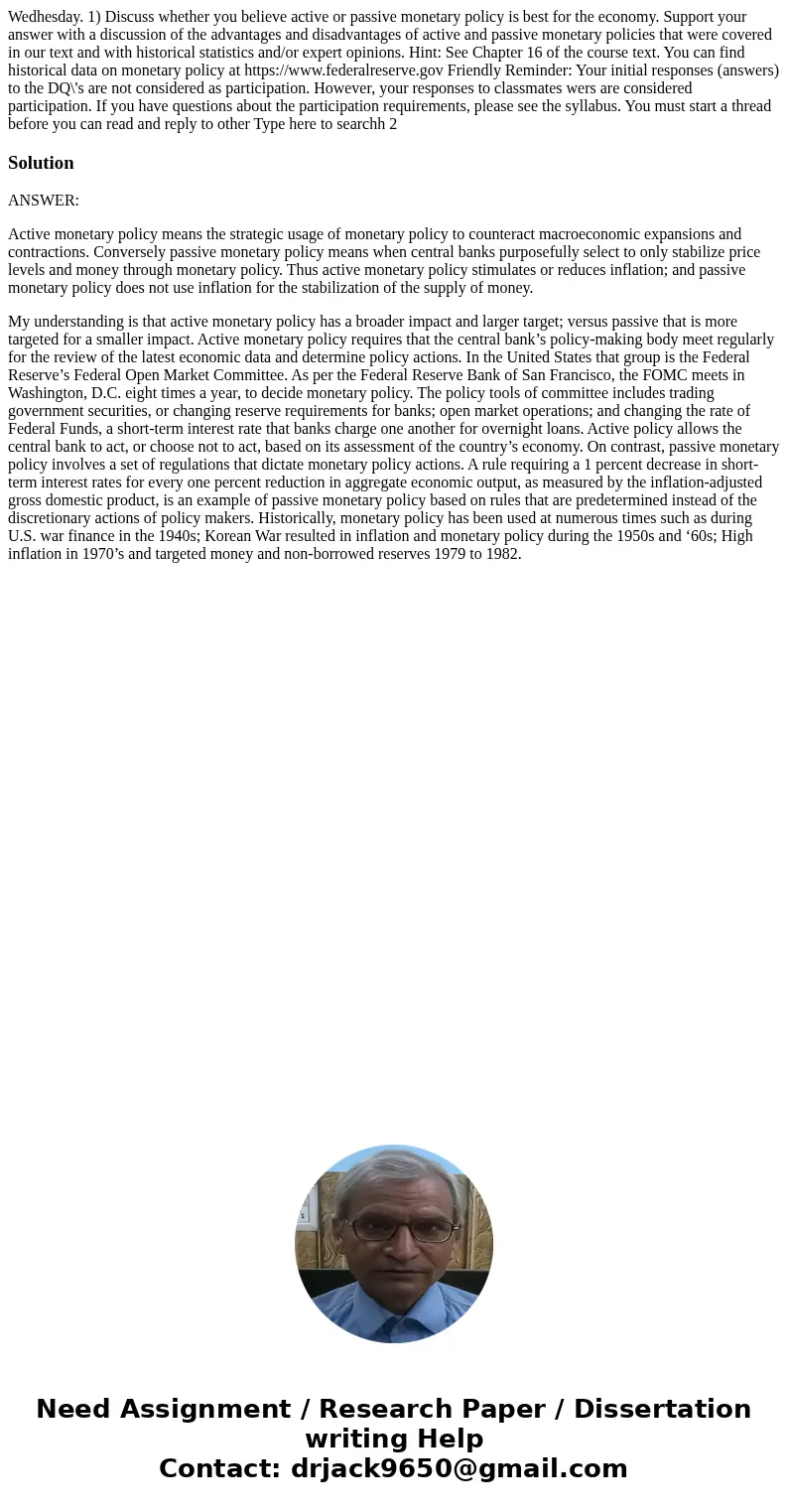Wedhesday 1 Discuss whether you believe active or passive mo
Solution
ANSWER:
Active monetary policy means the strategic usage of monetary policy to counteract macroeconomic expansions and contractions. Conversely passive monetary policy means when central banks purposefully select to only stabilize price levels and money through monetary policy. Thus active monetary policy stimulates or reduces inflation; and passive monetary policy does not use inflation for the stabilization of the supply of money.
My understanding is that active monetary policy has a broader impact and larger target; versus passive that is more targeted for a smaller impact. Active monetary policy requires that the central bank’s policy-making body meet regularly for the review of the latest economic data and determine policy actions. In the United States that group is the Federal Reserve’s Federal Open Market Committee. As per the Federal Reserve Bank of San Francisco, the FOMC meets in Washington, D.C. eight times a year, to decide monetary policy. The policy tools of committee includes trading government securities, or changing reserve requirements for banks; open market operations; and changing the rate of Federal Funds, a short-term interest rate that banks charge one another for overnight loans. Active policy allows the central bank to act, or choose not to act, based on its assessment of the country’s economy. On contrast, passive monetary policy involves a set of regulations that dictate monetary policy actions. A rule requiring a 1 percent decrease in short-term interest rates for every one percent reduction in aggregate economic output, as measured by the inflation-adjusted gross domestic product, is an example of passive monetary policy based on rules that are predetermined instead of the discretionary actions of policy makers. Historically, monetary policy has been used at numerous times such as during U.S. war finance in the 1940s; Korean War resulted in inflation and monetary policy during the 1950s and ‘60s; High inflation in 1970’s and targeted money and non-borrowed reserves 1979 to 1982.

 Homework Sourse
Homework Sourse